Growing blackberries in your own garden is a delightful and fruitful endeavor that brings sweetness and joy to your gardening experience.
Blackberries, with their rich, dark hue and juicy flavor, are not only a treat to the taste buds but also to the eyes as they adorn your garden.
Whether you’re a seasoned gardener or just starting out, blackberries can be a satisfying addition to your home garden, offering both culinary delights and aesthetic pleasure.
Benefits of Growing Blackberries
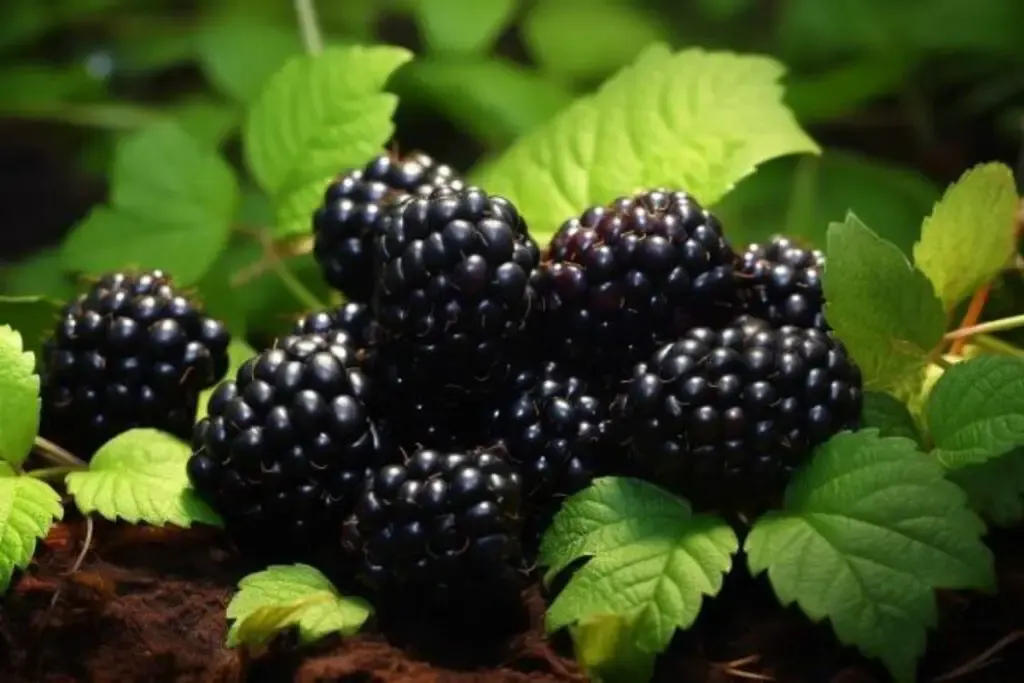
1. Nutritional Bounty
Blackberries are a powerhouse of nutrition. They are packed with vitamins, fiber, and antioxidants, particularly vitamin C and manganese.
Growing them at home ensures you have a fresh, organic source right in your backyard.
2. Versatility in the Kitchen
From jams and desserts to savory sauces and fresh snacks, blackberries can be used in an array of recipes. Having them on hand opens up a world of culinary exploration.
3. Easy to Grow and Maintain
Blackberries are relatively easy to cultivate and care for. They can adapt to various soil types and once established, require minimal maintenance.
This makes them a great choice for both novice and experienced gardeners.
My Favorite Blackberry Varieties
Choosing the right blackberry variety can greatly influence your gardening and harvesting experience. Each variety has its unique characteristics in terms of flavor, growth habit, and hardiness.
Here are three blackberry varieties that I find particularly rewarding to grow:
1. Thornless Blackberry (Apache, Navaho, or Arapaho)
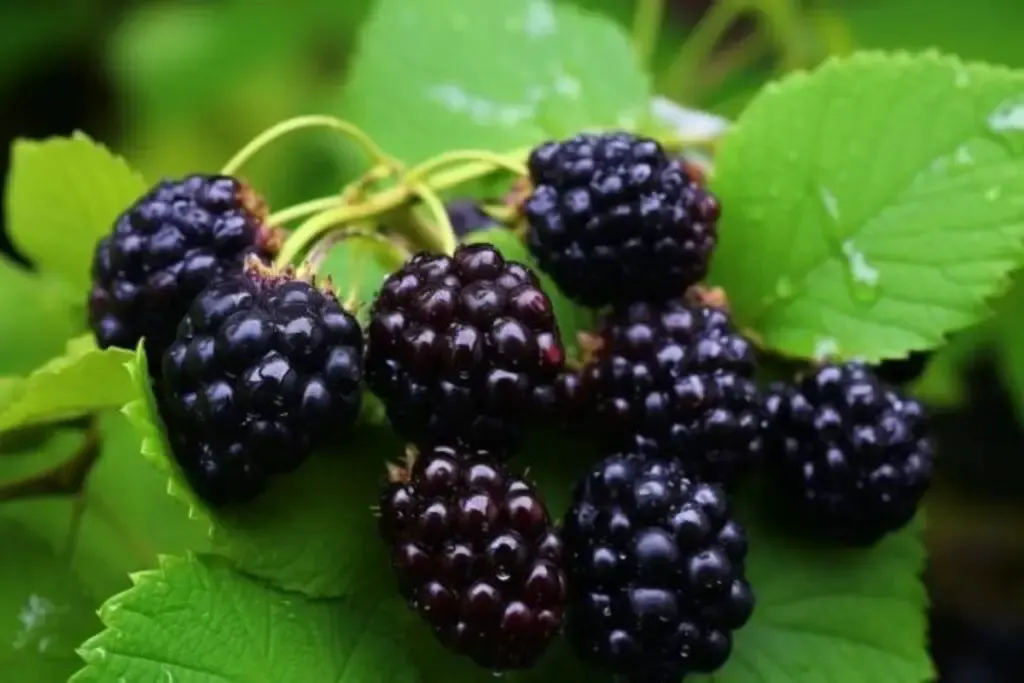
If you prefer a pain-free harvest, thornless varieties like Apache, Navaho, or Arapaho are excellent choices. They produce abundant, sweet fruit and are easier to handle and pick due to the lack of thorns.
These varieties are also known for their good disease resistance.
2. Triple Crown
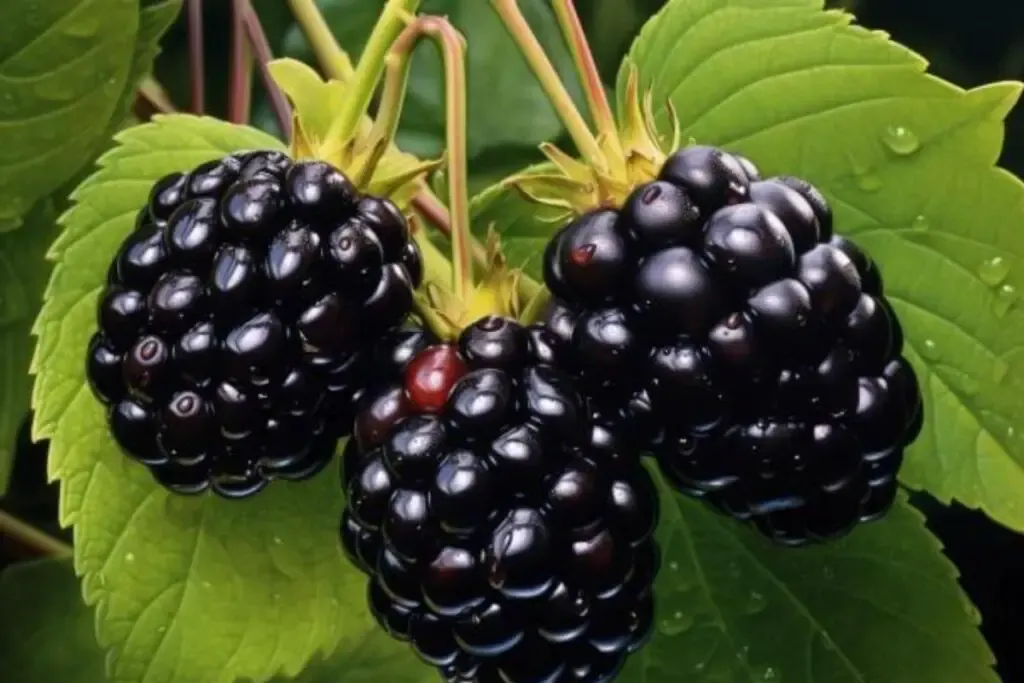
This is a semi-erect, thornless variety that is known for its large, flavorful berries. Triple Crown blackberries are ideal for fresh eating, jams, and desserts.
The plants are vigorous and produce a heavy crop mid to late season.
3. Ouachita
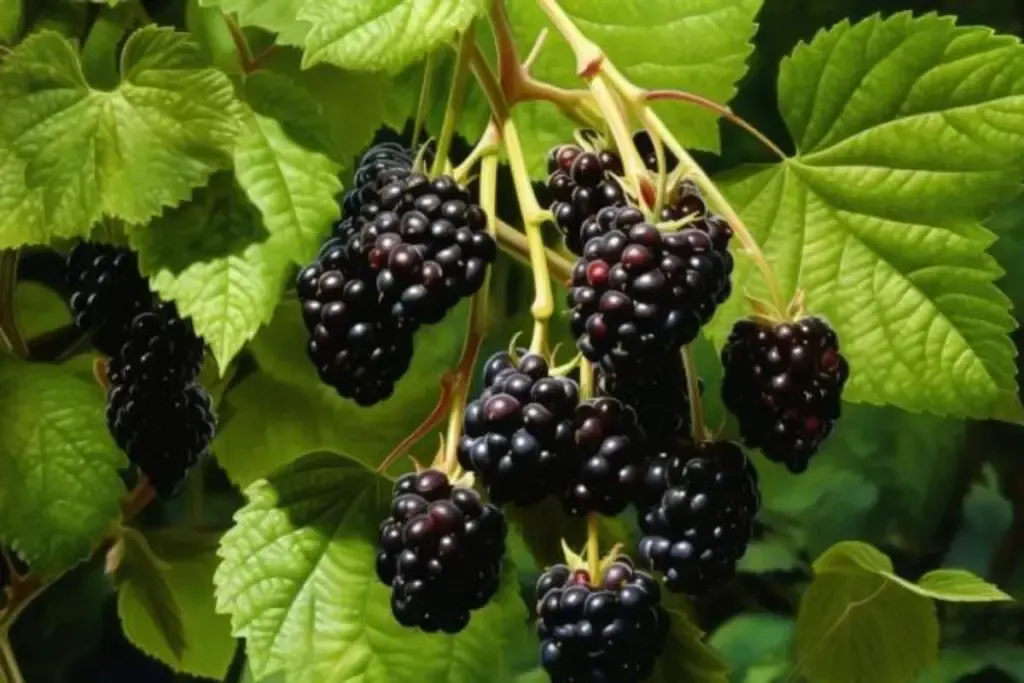
Pronounced ‘wash-uh-taw’, this is another thornless variety that is highly productive and bears very sweet fruit.
The berries are firm and store well, making Ouachita an excellent choice for those looking to preserve or enjoy their harvest over time.
Blackberry Care
Caring for blackberry plants is a gratifying process that, with the right approach, can lead to bountiful harvests of juicy berries.
Let’s explore the essential care tips to ensure your blackberry plants thrive.
Planting
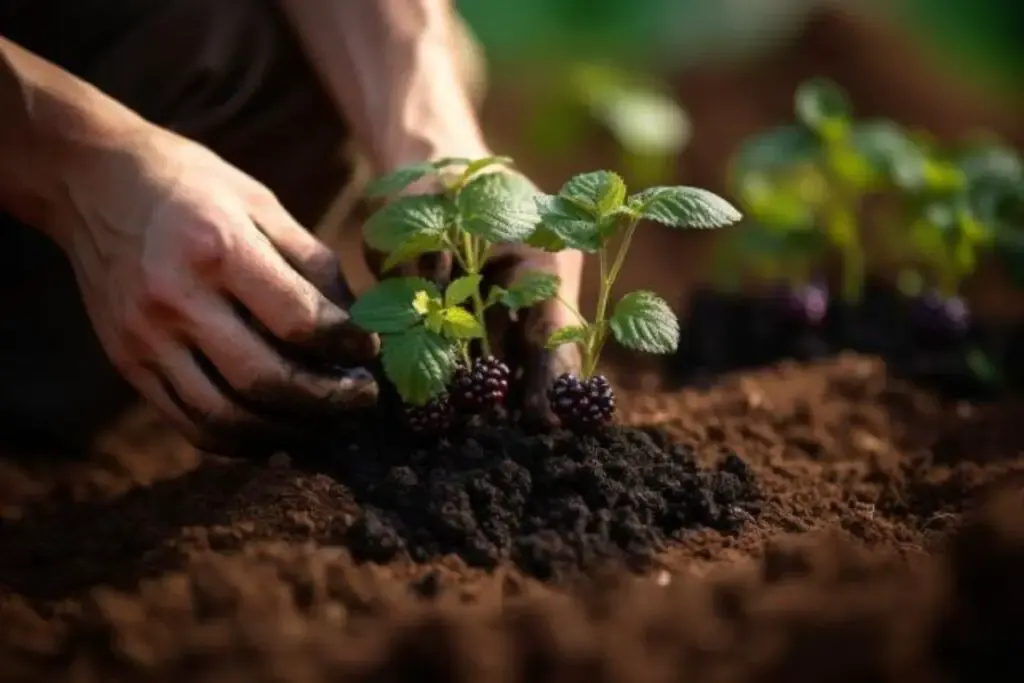
Planting blackberries requires some planning. Choose a sunny location with well-draining soil. Space the plants about 4-6 feet apart to allow room for growth and air circulation.
For bare-root plants, plant them in the early spring; container-grown plants can be planted at any time during the growing season. Ensure the root zone is well covered with soil, and water thoroughly after planting.
Light
Blackberries need full sun to produce the best fruit. Aim for a spot that gets at least 6-8 hours of direct sunlight daily.
Adequate sunlight ensures a healthy harvest and helps prevent disease.
Soil
Blackberries aren’t too picky about soil but they do best in fertile, well-draining soil with a pH between 5.5 and 6.5.
If your soil is heavy clay or very sandy, amend it with organic matter to improve its structure and fertility.
Water
Regular watering is crucial, especially during the growing season. Blackberries need about 1-2 inches of water per week. Make sure the soil stays moist but not soggy.
Drip irrigation or a soaker hose is ideal for keeping the roots consistently moist without wetting the foliage.
Temperature and Humidity
Blackberries are hardy plants that can tolerate a range of temperatures. However, they do best in temperate climates. While they can handle some humidity, ensure good air circulation around the plants to prevent fungal diseases.
Fertilizer
Fertilize blackberries in early spring with a balanced fertilizer, like a 10-10-10 formula, applied at the rate recommended on the label.
Too much nitrogen can lead to excessive vegetative growth at the expense of fruit production, so it’s important to balance the nutrients.
Harvesting Blackberries
Harvesting blackberries is a rewarding experience, marking the culmination of your hard work. The best time to pick blackberries is when they have fully ripened on the vine.
You’ll know they’re ready when the berries turn a deep, glossy black and come off the stem with a gentle tug. They should be plump and firm, with a slight give.
Harvest regularly to encourage more fruit production. Remember, blackberries do not continue to ripen once picked, so it’s important to wait until they’re fully ripe for the best flavor.
Pruning
Pruning is an essential part of blackberry care. It helps to maintain the shape of the plant, encourage healthy growth, and increase fruit production.
Prune in late winter or early spring before new growth begins. Remove any dead or damaged canes and thin out the canes to prevent overcrowding.
For erect varieties, cut back the canes that have already fruited, as blackberries produce on second-year canes.
Propagating
Blackberries can be easily propagated through tip rooting, where the tips of the canes touch the ground and take root.
This can be done intentionally by bending a cane down to the soil surface and securing it in place, usually in late summer.
The following spring, you can sever the new plant from the mother plant and replant it. Another method is by taking cuttings and rooting them, which is best done in late spring or early summer.
How to Grow Blackberries From Seed
Growing blackberries from seed is a more challenging and lengthy process, but it can be done. Start by stratifying the seeds, which involves chilling them in the refrigerator for about 6-8 weeks to break dormancy.
After stratification, sow the seeds in a seed-starting mix and keep them moist until they germinate. Be patient, as this can take several weeks to a few months.
Once the seedlings are big enough, transplant them into individual pots and care for them until they are ready to be planted outside.
Growing in Pots
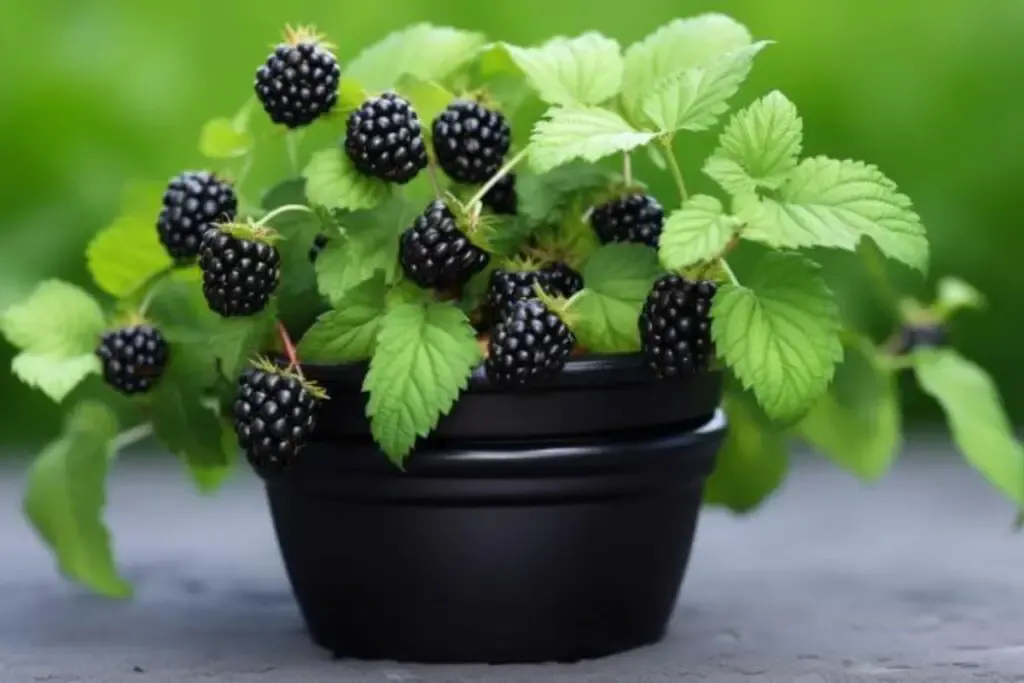
Growing blackberries in pots is possible, especially for smaller or dwarf varieties. Choose a large container with good drainage and use a high-quality potting mix.
Keep in mind that potted blackberries will require more frequent watering and fertilizing than those planted in the ground.
Also, ensure the pot is placed in a location that receives full sun. With proper care, you can enjoy a bountiful harvest of blackberries even in a small space.
Overwintering
Overwintering blackberries is an important aspect of their care, especially in regions with harsh winters. Most blackberry varieties are hardy, but they still benefit from some protection during the cold months.
After the first frost, apply a thick layer of mulch around the base of the plants to insulate the roots. In extremely cold climates, you can also cover the canes with burlap or a frost cloth.
Remove the protective coverings in the spring when the threat of frost has passed and new growth begins.
Transplanting
Transplanting blackberries should be done cautiously to avoid damaging the roots. The best time to transplant blackberries is in the early spring when the plants are still dormant.
Carefully dig up the plant, trying to keep as much of the root system intact as possible. Replant in a well-prepared site with similar growing conditions.
Water thoroughly after transplanting and keep the soil consistently moist until the plant is well-established.
Common Pests & Diseases
Blackberries can be susceptible to several pests and diseases. Common pests include spider mites, aphids, and Japanese beetles, which can be managed using insecticidal soaps or neem oil.
Diseases like rust, botrytis fruit rot, and powdery mildew can also affect blackberries. To prevent these, ensure good air circulation around the plants and practice proper sanitation by removing any diseased or dead plant material. If a disease is persistent, a fungicide may be necessary.
Remember, growing blackberries is more than just about the harvest; it’s about the joy of nurturing something from the soil to the table.
Whether you’re a seasoned gardener or a beginner, the journey of growing blackberries is filled with learning, patience, and, ultimately, the sweet reward of fresh, juicy berries.
Enjoy the fruits of your labor, and happy blackberry gardening!

